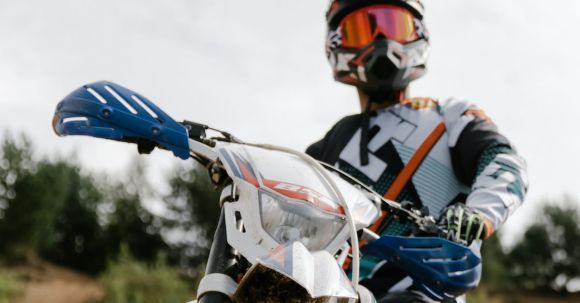When it comes to off-road riding, one of the biggest challenges you may face is navigating slippery surfaces. Whether it’s wet grass, muddy terrain, or icy trails, riding on these surfaces requires a different set of skills and techniques. In this article, we will explore some tips and tricks to help you ride off-road on slippery surfaces with confidence and control.
1. Choose the Right Tires
The first step in riding off-road on slippery surfaces is to ensure you have the right tires. Look for tires that have a good amount of tread and are specifically designed for off-road riding. These tires will provide better grip and traction, allowing you to maintain control on slippery surfaces.
2. Adjust Your Riding Technique
When riding on slippery surfaces, it’s important to adjust your riding technique. Slow down and keep a light grip on the handlebars to maintain control. Avoid sudden acceleration, braking, and turning, as these actions can cause your tires to lose traction and result in a loss of control. Instead, use smooth and gradual movements to maintain stability.
3. Stay Balanced
Maintaining your balance is crucial when riding off-road on slippery surfaces. Keep your weight centered and distribute it evenly between the front and rear tires. This will help improve traction and stability. Additionally, keep your knees bent and elbows relaxed to absorb any bumps or shocks that may occur.
4. Use the Correct Gear
Wearing the right gear is essential when riding off-road on slippery surfaces. Make sure you have appropriate protective gear, including a helmet, gloves, and boots with good grip. Additionally, consider wearing knee and elbow pads for added protection. Having the right gear will not only keep you safe but also enhance your riding experience.
5. Look Ahead
Maintaining situational awareness is crucial when riding off-road on slippery surfaces. Keep your eyes focused on the path ahead and scan for potential hazards or obstacles. This will give you more time to react and adjust your riding technique accordingly. Looking ahead will also help you choose the best line and avoid the slipperiest areas.
6. Feather Your Controls
Feathering your controls refers to using a light touch on the throttle, clutch, and brakes. By doing so, you can maintain smoother control and prevent sudden movements that may cause your tires to lose traction. Practice feathering your controls on different surfaces to get a feel for how your bike responds.
7. Practice, Practice, Practice
The key to mastering off-road riding on slippery surfaces is practice. Find a safe and controlled environment, such as an off-road park or a designated trail, to hone your skills. Start with easy trails and gradually work your way up to more challenging terrain. By practicing regularly, you will become more comfortable and confident in handling your bike on slippery surfaces.
In conclusion, riding off-road on slippery surfaces requires a different set of skills and techniques. By choosing the right tires, adjusting your riding technique, staying balanced, wearing the correct gear, looking ahead, feathering your controls, and practicing regularly, you can ride off-road on slippery surfaces with confidence and control. Remember, safety should always be your top priority, so ride within your limits and be aware of your surroundings. Happy riding!
